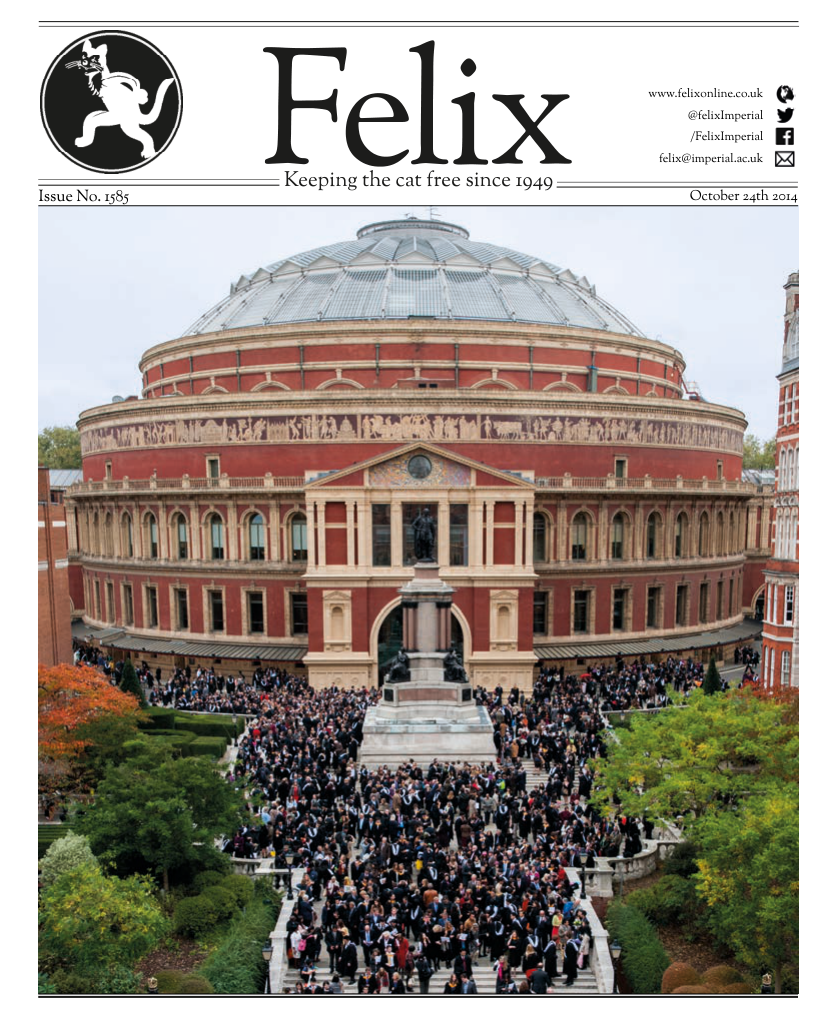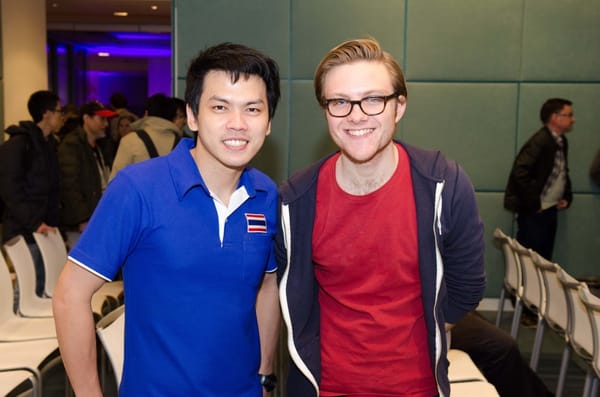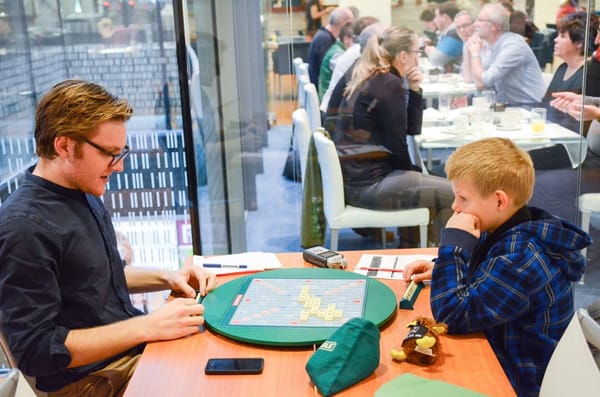Prof. Sir John Pendry, the physicist famous for inventing the invisiblity cloak
The Perfect Lens – an Interview with Professor Sir John Pendry

Professor Sir John Pendry, FRS, holds a Chair in Theoretical Solid State Physics here at Imperial. In 2014 he was awarded the $1M Kavli Prize by the Norwegian Academy of Science and Letters in recognition of his work in the field of nano-optics. This article is a summary of an interview for Felix that took place on September 26, 2014.
Ben Fernando: So, would you mind telling me a little bit about me and your work?
John Pendry: Well, I started here in 1981, but thankfully they still pay me so I guess I must still be considered worthwhile! When I arrived here I was interested in surface structure and catalysis. I worked on electron diffraction data and surface crystallography, before looking at how waves move in disordered solids. This is a really difficult thing to do, and most of my work was ignored at the time and is only now coming to the fore.
One result that was really important from all this came about when I was looking at the transmission of light through disordered materials – those where the light isn’t absorbed, but also isn’t transmitted because it’s all scattered away. An example would be, say, a bottle of snow.
I was able to show that this was a bit like a maze, in that there was one particular path along which all the light was transmitted through such a medium. Obviously, this can massively increase the transmission coefficient (the amount of light hitting the detector compared to the amount incident). This result was only tested about three years ago, but a Dutch Group were able to increase this coefficient by a factor of 10,000. One thing that we’re looking at now is whether this technique might be adapted to enable better medical imaging through a person’s skin.
In the mid-90’s, I moved on to looking at optics, specifically photonic crystals. These are weird crystals which are black at certain frequencies not because they absorb light but because they don’t let any light in. I like to say that you couldn’t light a match inside one because there’d be nowhere for the light to go.
This led on to working for the Marconi Company, looking at materials used for radar absorption on warships. They knew that the carbon fibres were absorbing radar well, but didn’t know why. After doing some work on this, it turned out that the key wasn’t that the material was made from carbon, but rather that it had a fibrous nature. Unlike most materials that you might encounter, this meant that the structure and not the composition was the main determinant of the material’s properties. Another good example is silver – crystalline silver is highly reflective, but in granular form silver appears black.
We called this new class of materials ‘metamaterials’. The structure of the metamaterials was actually altering their physical properties, and they allowed us to realise things that might otherwise have not been possible. In optics you’re always constrained by the available materials, but metamaterials raised the prospect of a whole new science.
One such class of materials would have negative refractive indicies. What would this mean? Well all sorts of weird things would happen: the material would behave like a lens. It wouldn’t even need to be shaped, a simple slab of it could do the job.
I was working on this one Sunday morning (which as Head of Department sometimes feels like the only time you get to do your own research!) when I realised that the lens could be ‘perfect’ – it wouldn’t be limited to resolving things the size of the wavelength as normal lenses are – it’d be something quite new and extraordinary.
For a while I thought that I must have made a mistake somewhere. Everyone agreed, but no one could find the mistake. So eventually I published the paper under the rather provocative title ‘The Perfect Lens’. That was back in 2000, and there was a big storm over it. Lots of people got very upset, and even now continue to insist that I was wrong. But they’re just digging holes, and as the holes get deeper their voices get fainter.
In the end that became my most famous (or infamous!) paper, and is at over 5,000 citations and counting. The lens we’d come up with broke the Law of Abbe, which says that the size of the wavelength is the best that you can do in optics. Using things that you’d ordinarily think were not lens-like at all, like metallic silver, we were able to increase light intensity by factors of up to 100,000. This is getting on for what a laser can do. But our nanoscale concentrations of light would be far less expensive and dangerous than a high-power laser.
These incredibly intense concentrations of light lead us to another amazing thought. Light doesn’t normally ‘switch’ with itself. What I mean is that two photons rarely interact in a useful manner. Electrons are very good at this, they can scatter off each other, and modern electronics work off this principle. But with light, in order to get it to interact you normally have to change it into an electron, then interact with it before changing it back into a photon. But at these intense concentrations, light might begin to interact with itself – we could possibly make routing switches and optical chips, maybe even one day we’ll be able to do computing with light.
To properly understand this, we have to throw away Snell’s law and go back to Maxwell’s Equations. In fact, let’s go all the way back to Einstein. He talked about how space can be stretched or squashed, and that light rays are affected by this distortion. Now we know that Maxwell’s equations differ from Snell’s law in that they deal with fields of force, rather than rays. How do the field lines behave when space gets distorted?
Well, it turns out they behave like they’re embedded in space. I like to think of this as wires in a rubber sheet (the kind that people often use to visualise space) – they move with the distortion. So we can control light be stretching and pulling space. That’s all good, but we can’t really pull space at will, we’re not black holes.
It turns out that we don’t need to. We can use General Relativity to write down Maxwell’s equations in a different format, and the metric (a measure of how squashed space is) sits exactly where we’d expect the refractive index to sit in the equations. So we don’t need to squash space to make like switch, rather we can do this just by changing the refractive index that the light’s in, which has the same effect as changing the distortion of the space the light is in.
It turns out that the materials you need to do this are rather exotic, and have negative refractive indices. Now most people wouldn’t light up when they saw this set of partial differential equations, but it turns out that they let us design a cloaking device. The field lines deviate, they don’t go through the object but also don’t scatter away – they come back together on the far side of the object.
Once I had the Harry Potter aspect under control, it made it much simpler to get people interested. The outreach has been fun, and the work has led to me being awarded the Kavli Prize for this so-called ‘transformation optics’.
Recently we’ve been looking to concentrate light in more interesting ways, using more complex transformations. We can even do an inversion, which basically turns things inside out.
Imagine that we have a slab of silver, and then the electrons in the silver form waves on the surface of the sea of delocalised electrons. We call these surface plasmons. A molecule at the surface will radiate plasmons off to infinity, but if we do an inversion suddenly the points swap around. The infinity becomes the origin, and vice versa. Because we change the energy scale, the light at the point of origin gets slower and slower as the energy from infinity piles up. We can basically crush light to intensities a million times more than what we had before.
By doing different mathematical transformations on the silver, we can create all sorts of different structures. In fact, we’ve been able to make a radar dish that weighs a few hundred grams, where a conventional concave lens would weigh ten or twenty times as much. We have a ‘flat lens’ that refracts differently at its centre to at its edge, thus allowing us to focus light. This was commissioned by Boeing, and looks like a poppadum. Other companies like Toyota are interested in these because they might be able to use them in collision avoidance radar in driverless cars – the reduced size compared to a conventional lens would bring all sorts of advantages.
We’ve also been looking into developing phased radar arrays, which instead of sweeping a beam around the sky simply sit on a silicon block that delivers the right phase of light to the lens. When a specific phase hits a specific part of the lens it sends the light in a particular direction. These could be a lot cheaper and plug into a USB port, so Bill Gates is interested as it might enable internet access to be brought to remote communities, for example in Africa. Or we might be able to use this to do MRI scans that are less risky as there are no RF fields going all over the place that can heat things up in your body.
BF: Wow. That’s quite a set of achievements! I don’t even know where to start or what to ask. I’ll need some time to think about it I guess. For now though, just one question: are you hoping to get any more invites from Scandinavian Academies, perhaps to Stockholm?
JP: I would like to have a flat in central London one day, so that would be nice! I had a lovely week in Norway when I won the Kavli, so we’ll see what happens next.
BF: Good luck! We’ll be in touch.









